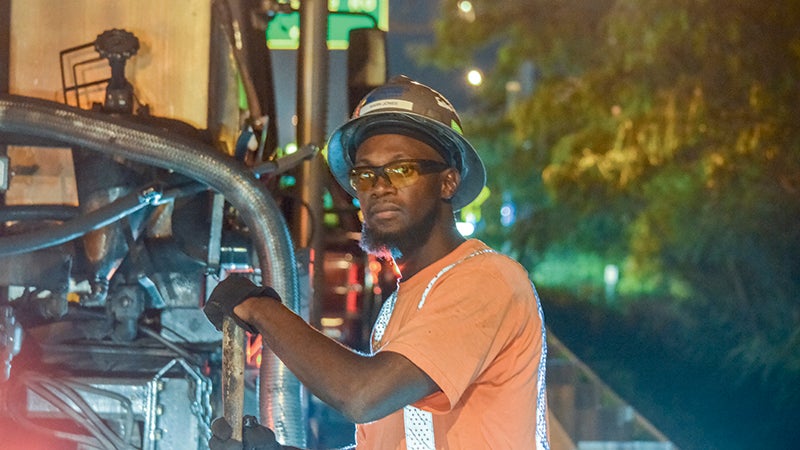Men (and women) at work
Published 9:58 pm Friday, August 4, 2017

- Asphalt distributor operator Mark Jones stands beside the distributor that’s meant to spray an emulsion that will bond the newly lain asphalt to the existing asphalt like glue.
The traffic comes by close and fast. The noise is unrelenting. And a change in the weather can seem to make everything harder by a factor of 10.
For construction crews working on I-664 and other highway road projects, it’s just another day — or night — at the office, albeit an inherently dangerous one.
During the 12-month period ending May 1, according to the Virginia Department of Transportation, there were 2,488 work-zone crashes through the commonwealth.
For those who work on those highway projects, there’s constant tension between the need to improve Virginia’s highways and the desire to keep their workers safe.
Todd Collins has spent more than 20 years working in this environment and has learned never to turn his back to the road.
“Sometimes you get complacent, until you hear brakes locking up and a car hit a cone,” he said during a recent tour of a repaving project on I-664.
“VDOT’s goal is to get rideability on the project for the smoothest ride possible,” said Collins, lead inspector with NXL Construction Services and a consultant for the Virginia Department of Transportation.
“I want to give VDOT a good product to ride on, but at the end of the day I want everyone to go home.”
He said some more cooperation from drivers would help achieve that goal.
“I understand it sucks being stuck in traffic, but we have a job to do,” he said. “If they can give us a break, we’d appreciate it.”
Contractors are working to add several inches of new pavement to I-664 lanes. Crews of about 20 operators, inspectors and laborers will work up to nine hours in the evenings, six nights a week, to meet the target completion date this December.
“We are putting new pavement over the existing road out there to add years to the structure,” said John Arms Jr., area construction engineer for the VDOT’s Hampton Roads District.
Workers began spot leveling near the Pughsville Road exit just after 8 p.m. on Tuesday. Hundreds of tons of asphalt, in a mix designed to handle calculated traffic volumes, were deposited on the roadway. Operators evened out that fresh asphalt with three rollers, while laborers used rakes and shovels.
The noise in the work zone was constantly throbbing between the heavy machinery and traffic.
“You’re going to have lots of equipment noise, on top of traffic moving past you fast,” Arms said.
Their goal was to finish the work by 5 a.m. to allow time for new pavement markings, and to move lane closures before morning rush hour.
Arms said there are pros and cons to working night shifts on projects like this. The weather is cooler, for example, but summer rains can dampen progress.
“We’re in the summertime, so we’ve been having those pop-up thunder storms that affect production,” he said.
The biggest concern of all for everyone in the work zone, however, is safety. Even with advance warning signs to direct traffic and each worker wearing personal protection equipment from head to toe, everyone keeps their head on a swivel.
“I try to limit my exposure, even in the work zone, and I try to be diligent,” said asphalt distributor operator Mark Jones. “It’s also about being visible.”
Aggressive drivers are a regular issue for crews on the highway. Arms said car horns and yelling from drivers angry with the lane closures are typical in the night shifts.
“They don’t like being impacted on their travel, and they always let us know when they’re driving by,” he said.






